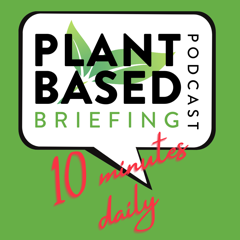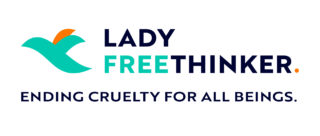Podcast Transcript
Hope
Welcome to the Hope for the Animals Podcast sponsored by United Poultry Concerns. I’m your host, Hope Bohanec and you can find all our shows at Hope For The Animals Podcast.org. And I welcome your questions, comments, feedback on this show. You can email me at hope at UPC – online.org
This is the third segment of a series that we are calling the reason for Vegan Series that will be supplemental to our full episodes. And in these short chats, I will be focusing on certain aspects of the animal agriculture industry. And today I’m going to talk about egg industry labels like cage free, free range and pasture raised. What do these labels really mean and are they better for the birds?
I want to start by saying that a chicken is a complex creature with social and psychological needs. She needs sun to warm her feathers. She needs the earth to pack and scratch and build a nest and dust bath in. Then she needs levels and branches to fly up on into perch on. She needs a colorful world of activity and stimulus, just like all animals, just like us. This is all denied in egg production, no matter the label, so alternative egg labels are growing in popularity. In 2017 eggs labeled cage free were 16% of the market. The industry is predicting that to meet consumer demands, cage free production will be 75% of the market in just six years by 2026. And to Understand the egg industry labels like cage free and free range, we really have to go back, and we have to start with the standard egg industry and the battery cage.
In the United States in the 1950s and 60s, as populations were increasing and urbanizing, the demand for buying eggs was increasing as well. And to cram more birds in a single building, farmers started putting them in cages and stacking them on top of one another. This innovation grew and became the standard industry battery cage system through the 1960s and 70s, and in that system, farmers can stack cages 10 high and go for the length of a 600 foot building with tens of thousands of birds in one building. These systems became the model for industrial chicken farming throughout the world, and if you want to learn more about the history of chicken farming I highly recommend the book “Prison Chickens, Poisoned Eggs” by Karen Davis.
So in these battery cage systems, the birds are so crammed in the cages they can barely move. It would be like living your entire life in a crowded elevator. If you can imagine how uncomfortable it is in a crowded elevator where your kind of pressing up against the other people. That’s all the space these birds have to live. It’s wire mesh caging so the bird’s feathers rub off from rubbing against the wire. They can have blisters. Their skin can be rubbed raw. Their feet are in great pain pressed up against the wire. And sometimes their feet actually grow into the wire. It’s just awful. There is the endless sounds of machinery and conveyor belts bringing in the food, taking out the eggs and the constant cries of distressed birds. They sometimes get a wing stuck or a leg or their head stuck in the wire, and they will frantically beat their wings wildly like shrieking, loudly trying to free themselves. But after hours of struggle, they will give up and will be just stuck. Unable to get to food or water, they’ll probably die of dehydration.
Hens can spend 10-12 months in these cages in anxiety and frustration and pain till they are considered by the egg industry to be what is called “spent.” They’re not giving as many eggs as the younger hens, and there are plenty of younger hens who they want to fill those cages with. So, they will just clear out the cage and kill all of the hens in just a fraction of what would be their normal life span. It’s a miserable, monotonous existence.
Hope 04:56
So in the 1980s and 90s, animal activists were learning about these conditions and videotaping, going in and actually seeing what was happening, exposing the horrors in the meat, dairy and egg industry and the battery cage systems where these egg laying hens were just languishing in misery, were seen as some of the worst of the worst conditions, and rightly so.
There certainly were and are criticisms of the battery cage from scientists and activists that started in the 1980s in Europe and spread to the U. S. in the 1980s and 90s. And campaigns exposing the battery cage have sparked consumer concerns and have extended to legislative bans on the cages. In fact, Michigan just recently became the latest state to enact a law phasing out the battery cages. All eggs produced and sold in the state must be sourced from cage-free operations by 2024. It’s the fifth state to do this, so all of this has forced the egg industry to respond.
The result is a shift in the industry to offer alternatives, such as enriched cage systems, and we’ll talk briefly about that, and cage-free systems. So, the enriched cage systems, they’re sometimes called colony cages – I’ll just briefly touch on them because I think that this is really just kind of a middle ground stepping stone, and eventually we will be going to all cage-free systems. But the enriched cages are simply marginally larger cages with some dividers and nesting boxes, sand and wood shavings and perhaps a perch that’s about a foot or so off the ground, so birds have somewhat of a more so-called natural experience. Unfortunately, though, the enriched cages have their own issues. And using these shavings and all these cages makes the airborne dust issues in these enclosed buildings even worse than they already were. And it’s also been reported that producers will pack the enriched cage full of more chickens than they were meant to hold, creating the same situation of overcrowding of the battery cages. So, the enriched cages are only slightly better if it all
Hope 07:20
A cage-free system is simply removing the cages so that there are thousands upon thousands of birds in huge, windowless, dark buildings. And this is called a floor system. With both these operations enriched cages and cage-free systems, the birds are still in musty, dark buildings. They still are massively overcrowded. They are filthy environments with pathogens and flies. The waste builds up, they only clean out the buildings, maybe every couple of years, so they’re living in their own waste. It causes toxic ammonia to fill the air. It burns the birds’, sensitive eyes and throats and noses. It’s a barren, boring, monotonous, maddening existence. There’s no sun, no earth, no trees, nothing to experience even close to a natural life that is their birthright. And as Karen Davis of United Poultry Concern says, it’s their Earth right.
So no egg operation, no matter the label can profitably hatch their own chicks. So, companies with these humane and alternative labels still source all their chicks from horrible industrial hatcheries. And I encourage you to listen if you haven’t already to The Reason for Vegan Series on “The Egg Industry Exposed” to learn more about the horrible hatcheries. Even cage-free companies with names like Humane Harvest acquire their chickens from cruel hatcheries, have tens of thousands of birds and one building with no light, no sun, no earth, and send them to slaughter at only about two years of age, when chickens could live 10 years or more. And those eggs will be labeled cage free.
Free range and pasture raised are really no better. First of all, there is minimal definition and zero enforcement on these labels. These labels are awarded by the USDA or the FDA simply on the word of the producer. There is no on-site inspection of the farms, so for free range, all that is required is “access to the outside.” But it doesn’t say anything about the size of the area, or how long the birds have access to that area. Nothing. So free range could merely be a cage-free floor operation, just as I described, with a door that opens to a 5 ft by 5 ft concrete patio or a dirt area that’s just a mud hole in the winter. And they can say that that is free range because the birds have “access to the outside”, even though the space is, you know, not big enough for 20 birds when there are 10,000 in the building or it’s so unappealing, no bird would want to go out there. They could also have the doors open, maybe for just five minutes of the day. It There’s no regulation on how long the birds have access, so the label means nothing.
Hope 10:42
And here’s an example. I live in Northern California and in all the natural food stores in this area, the supposedly best of the best eggs, the most expensive eggs are Judy’s Family Farmed Eggs. On their website they used to have images of healthy-looking chickens out in the grass, and it said things like, “Our chickens are raised in the wide-open spaces of the Sonoma Valley, where they are free to run, scratch and play.” So, I decided that I would go out and have a look around. I went out, I found out where their main facility was and decided to go and check out Judy’s Family Farmed Eggs. And when I got out there, I could see acres and acres of land, of space, but no chickens. There were no chickens in sight. All there were these long, windowless warehouses, metal buildings.
So I walked up to one of the buildings and I went to the end where I could have a look in. I was able to peer in, and what I saw was so disheartening. There were tens of thousands of birds crammed into this building. It was dark. It was dusty. There was just, you know, particles in the air. Birds were missing feathers and had raw skin exposed. And there was one little hen, she was in the corner, and she was just plopped on the ground. Her legs were splayed out to her sides, and you could just tell she couldn’t walk. She was unable to get up to stand up, so she likely couldn’t get to the food and water. She would probably just sit there and die of dehydration. It was awful, absolutely awful that these eggs could be labeled family farmed and cage free.
Now, if you go to Judy’s website today, they don’t have those images of the chickens outside. They don’t have claims of the chickens living outside because they were sued for false advertising. The Animal Legal Defense Fund, ALDF, sued them for false advertising, and they won. So, they were forced to remove all those images of the happy chickens because it was a lie. They had to remove all the references to the chickens being outside. Because it was a lie. However, they’re still able to use the cage-free label, so they’re still able to perpetuate that lie through the false impression that labels like cage-free imply.
These producers hire slick marketers that distort the story, alter the label and change consumers conceptions. These companies intentionally mislead egg buyers so they can charge more money for these alternative-labeled eggs. In fact, it’s not uncommon for these places. To have one building full of battery cages and then the building right next to it with a cage-free floor system. If they really cared about the welfare of these birds and thought that the cage free system was better for them, wouldn’t they have all the birds out of the cages?
Hope 14:12
They want to broaden their market. They want to have both options so they will be more profitable. They don’t care about making conditions better for the birds. They care about making money so they prey on people’s compassion and kindness and tell them a story they want to hear. But it’s all a lie.
There are multifaceted distresses that chickens face in all egg production from the very beginning. The horrors of the hatchery, debeaking, overcrowding, genetic and reproductive manipulation, mind numbing monotony, to the very end the terror of the transport and the violent slaughter at a very young age. This is all concealed by a rhetorical sleight of hand: cage-free. All welfare considerations for these hands are funneled through the single lens of the size of their confinement, which is now seemingly resolved with the cage-free label.
But the truth is that there is so much more cruelty than just the cage, the label is accurate in that they’re no longer in a small cage, but it conveys a false impression like all the problems are solved.
These chickens still live miserable short lives in turmoil and fear in overcrowded conditions and go to a sickening slaughter. Don’t buy the lie and don’t buy any eggs, no matter the label.
If you’d like to learn more about this and other alternative labels, I have written a book about the humane hoax, which is what we are talking about basically, labels that are supposedly humane but not what they seem. The book is called “The Ultimate Betrayal: Is There Happy Meat?” And it’s available on our podcast website Hope For The Animals Podcast.org.
Thank you for listening to the supplemental segment called The Reason for Vegan. You can find the other Reason for Vegan Series shows, as well as all our full episodes with more great information and special guest interviews at Hope for the Animals Podcast.org And if you want to support this podcast, please donate to UPC – Online.org
Please leave a rating and or review wherever you listen to your podcasts. That will really help us out. And please remember that the only way to truly be sure that no chicken suffered is to not eat eggs and to live vegan.




